If you’re seeing rust streaks on your roof, warped decking underneath, or damp spots near the edges, your ventilation system probably isn’t doing its job. And if your roof is made of metal, the wrong kind of vent (or no vent at all) can quietly cause serious damage over time.
Ventilation doesn’t just help your attic stay cool, it protects your entire roof from the inside out. When hot air and moisture can’t escape, it builds up under the panels. That’s when things go wrong: wood starts to rot, insulation sags, and your energy bills climb.
If you’re installing a metal roof or upgrading an old one, don’t skip the vents. They might be small, but they carry a lot of weight. Choosing the right metal roof vents can mean the difference between a roof that performs for 40 years and one that fails before 15.
In this guide, you’ll learn:
- How roof venting actually works with metal systems
- The top vent types used in metal roofing today
- What factors to consider when choosing your vents
- How much it all might cost
- And why your choice of installer matters just as much as the vents themselves
How Does Ventilation Work With A Metal Roof Vents?
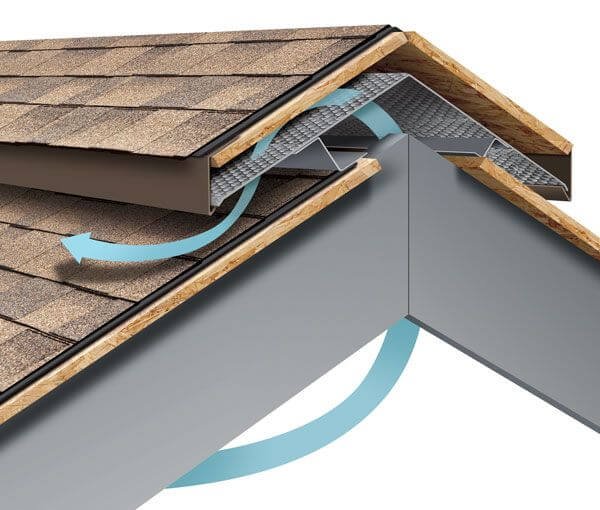
You might think metal roofs don’t need much ventilation. They’re durable, reflective, and don’t trap heat like asphalt. But here’s the catch: heat still builds up inside your attic, and moisture still sneaks in from daily living showers, cooking, laundry.
Ventilation lets your roof “exhale.” It moves air in and out so excess heat and humidity don’t stay trapped under your roof deck. Without this airflow, your metal roof can suffer from:
- Condensation buildup (which leads to mold and rust)
- Shorter insulation lifespan
- Ice dams in winter
- Overworked HVAC systems
Metal roofs need a balanced system: intake vents (usually soffit vents) pull in fresh air, while exhaust vents (like ridge or box vents) let hot air escape near the roof peak.
Ventilation Performance Table
| Component | Function | Typical Placement | Needed For Metal Roof? |
| Soffit Vents | Intake – draws in air | Roof eaves | ✅ Yes |
| Ridge Vents | Exhaust – releases heat | Peak of the roof | ✅ Yes |
| Gable Vents | Exhaust or intake | Gable ends | ⚠️ Sometimes |
| Turbine Vents | Wind-powered exhaust | Near ridge | ✅ Optional |
| Solar Vents | Motorized, solar-powered | Ridge or mid-slope | ✅ Optional |
Pro Tip: Always make sure your intake and exhaust are balanced. If air can’t come in, it won’t move out, no matter how fancy your exhaust vent is.
What Are the Best Types of Vents for Metal Roofs?
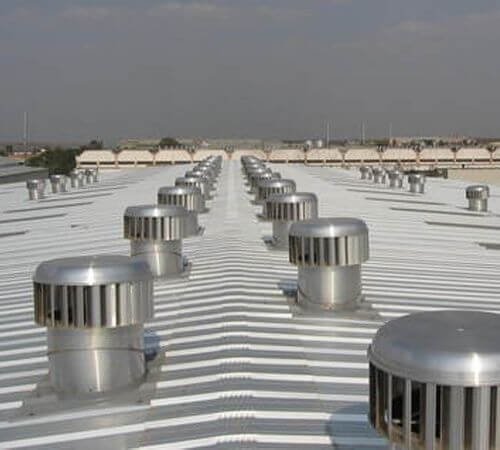
Choosing the right type isn’t about what’s popular, it’s about what works for your roof slope, attic space, and local weather. Let’s break it down:
1. Ridge Vents
Ridge vents are the most popular and efficient choice for metal roofs. They sit right along the peak, letting hot, humid air naturally rise and escape from your attic. Because they stretch across the roofline, they offer continuous ventilation, no moving parts, just steady airflow.
- Best for: Homes with long, straight ridges and matching soffit vents
- Avoid if: You lack proper intake (like soffit vents), or your roof is hip-shaped with minimal ridge space
Ridge vents are low-profile and blend in well, making them ideal for homeowners who want efficiency without sacrificing aesthetics.
2. Box Vents (Static Vents)
Box vents are simple square or rectangular units placed near the ridge. They use natural convection to release heat, no fans or motors involved.
- Best for: Simple roofs, budget-conscious installs, or homes with smaller attics
- Avoid if: You want powerful airflow or have complex rooflines
They’re not as effective as ridge vents over large spaces but can work well when spaced correctly.
3. Turbine Vents
Turbine vents also called whirlybirds spin when the wind blows, pulling out hot air more quickly than static vents.
- Best for: Windy regions with low natural airflow in the attic
- Avoid if: You live in snowy climates, ice can freeze the blades and stop movement
These vents are budget-friendly, need no electricity, and can dramatically improve attic ventilation when placed properly.
4. Solar-Powered Attic Vents
These modern fans use solar energy to drive motorized airflow. They’re energy–efficient and eco–friendly.
- Best for: Sun–drenched climates, energy-conscious homeowners, and large attics
- Avoid if: Your roof faces constant shade or your region lacks strong sunlight
They’re more expensive but can lower cooling costs and humidity dramatically in summer months.
5. Gable Vents
Gable vents are installed on the walls of your attic’s gable ends. They allow air to flow in and out horizontally, not vertically.
- Best for: Older homes or as secondary airflow support
- Avoid if: You’re installing a brand-new roofing system, they’re not a primary solution
While not enough on their own for most modern venting needs, they can work in tandem with other systems for added efficiency.
What Factors Should You Consider Before Choosing Metal Roof Vents?
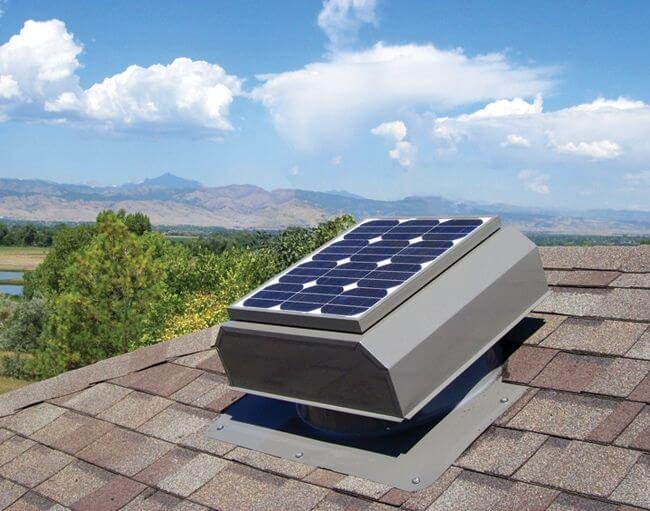
Metal roofing systems are more than just panels and fasteners. Vents need to fit your roof type, climate, and attic design. Here’s what to look at:
Roof Pitch
Your roof’s steepness affects how air flows. Steep-pitched roofs work great with ridge vents because heat rises and escapes easily through the top. If your roof is low-sloped or flat, ridge vents may not pull air well. In those cases, box vents or powered vents might be a better choice to push hot air out.
Attic Size & Shape
Attics come in all shapes and sizes. A small, open attic with one ridge line can usually be ventilated with ridge and soffit vents. But if your attic is large or has dormers and valleys, you may need a combination of vents like ridge vents with solar fans or gable vents to move air evenly.
Local Climate
Your region matters more than you think.
- In hot and humid areas, strong exhaust is key to reduce heat and moisture buildup. Turbine or solar–powered vents work well here.
- In cold climates, the focus is preventing condensation and ice dams. Balanced airflow helps keep the attic close to outdoor temperatures, reducing the risk of freezing.
Vent Material Compatibility
Metal roofs expand and contract with temperature. If your vents aren’t made from compatible materials, they can crack or pull away. Avoid cheap plastic vents. Instead, use metal or flexible plastic options rated for metal roofs to handle thermal movement without leaking.
Building Code Requirements
Most building codes require attic ventilation at either a 1:150 or 1:300 ratio. That means 1 square foot of ventilation for every 150 to 300 square feet of attic space. Half should be intake (like soffit vents), and half exhaust (like ridge or box vents). Always check the Net Free Vent Area (NFVA) on the label, it tells you how much airflow the vent actually provides.
Ventilation Ratio Table
| Attic Size (sq ft) | 1:150 Code Requirement | 1:300 Code Requirement |
| 1200 | 8 sq ft ventilation | 4 sq ft ventilation |
| 2000 | 13.3 sq ft | 6.6 sq ft |
| 3000 | 20 sq ft | 10 sq ft |
Expert Insight: Always check if your local codes require net free vent area (NFVA) specs. Not all 12″ vents provide 12″ of airflow.
How Much Do Metal Roof Vents Cost?
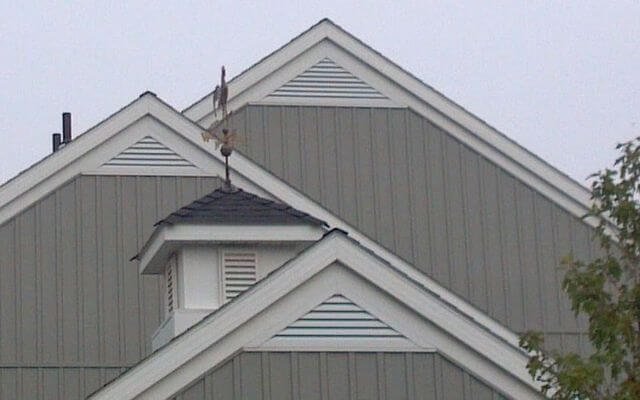
Prices vary by type, brand, and how tricky the installation is. Here’s a breakdown to guide you:
Metal Roof Vent Cost Table
| Vent Type | Average Cost (Material Only) | Installed Cost (per vent) | Notes |
| Ridge Vents | $2 – $4/linear ft | $300 – $600 total | Price varies by roof length |
| Static Box Vents | $25 – $40 each | $100 – $250 each | Simple to install |
| Turbine Vents | $50 – $90 each | $200 – $400 each | Best for windy regions |
| Solar Attic Fans | $300 – $600 each | $600 – $1200 each | May qualify for tax incentives |
| Gable Vents | $30 – $60 each | $150 – $300 each | Often used as supplemental vents |
Pro Tip: Don’t cheap out on installation. A $30 vent won’t help if it’s mounted wrong and leaks after a year.
Should You Install Vents Yourself or Hire a Pro?
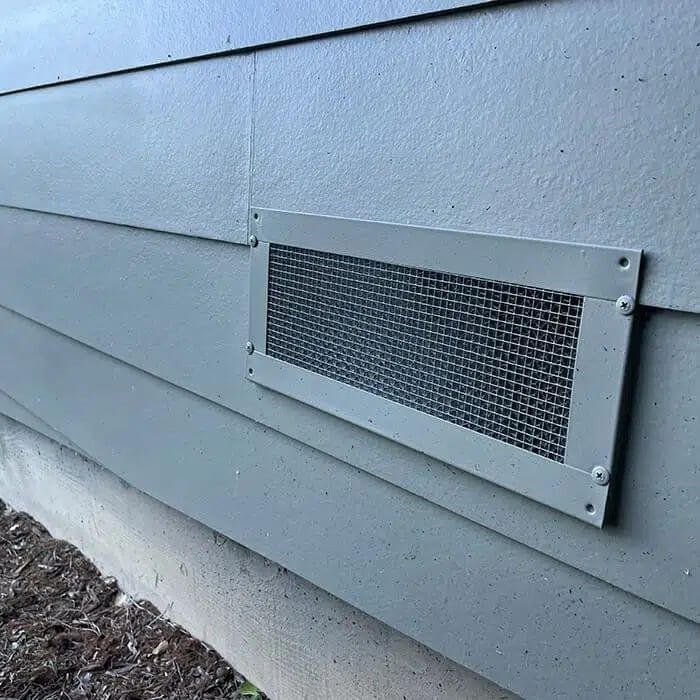
Installing roof vents might seem simple, cut a hole, drop in a vent, seal it up, done. But when it comes to metal roofing, things aren’t so straightforward. Unlike asphalt, metal expands and contracts with temperature shifts. If you don’t understand how that movement works, one wrong cut or fastener placement can lead to leaks, rust spots, or even a damaged roof deck.
Yes, if you’re handy and understand ventilation science, you might be able to install a few static vents yourself. But anything beyond that, like ridge vents, powered fans, or mixing vent types requires experience.
Here’s what professional installers bring to the table:
- Proper Vent Sizing: Pros know how to calculate the right amount of airflow based on attic volume, roof pitch, and local code.
- Correct Sealing & Flashing: Vents must be sealed in a way that moves with the metal. Poor flashing is one of the top causes of roof leaks.
- Material Matching: Using vent materials that expand at a different rate than your roof can cause gaps and cracks. A pro avoids that mistake.
- Code Compliance: Licensed contractors stay up to date on local building codes and ventilation ratio rules, so your install won’t fail inspection.
Expert Insight: A single badly flashed vent can void your entire metal roof warranty. That’s why most manufacturers strongly recommend professional installation, especially for metal systems.
If you’re in New York City or nearby and want it done right the first time, S&R General Construction NYC is a local name you can trust. We specialize in custom venting systems for metal roofs and handle everything from attic airflow analysis to precise, weather-tight installation.
Whether you’re upgrading an older system or building new, our crew ensures your vents work with your metal roof, not against it.
Want to protect your investment and avoid costly mistakes? Let us help you breathe easier, literally.
What’s the Right Metal Roof Vent for You?
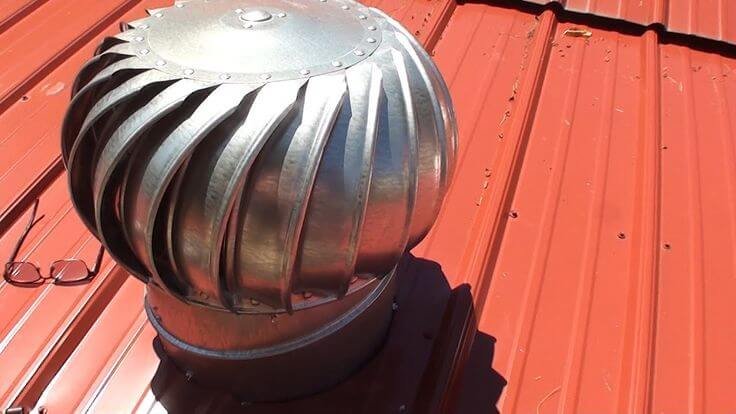
There’s no such thing as a one-size-fits-all roof vent, especially when it comes to metal roofing. The best vent for your home depends on how your attic is built, the shape and pitch of your roof, and the weather your home faces year-round. But now, you’ve got the know-how to make the right call.
Here’s a quick recap:
- Understand your attic’s size and airflow needs
- Match vent types to your roof’s shape and slope
- Keep intake and exhaust in balance
- Choose quality over short-term savings
- Work with a licensed roofer who knows metal systems inside and out
If you already have a metal roof or you’re planning to install one soon, don’t treat venting as an afterthought. A well-ventilated roof protects your insulation, lowers your energy bills, and helps your roof last decades longer.
If you’re in the New York City area and want peace of mind, S&R General Construction NYC is here to help. We’re not just another roofing company, we specialize in smart, custom-fit ventilation for metal roofs. From attic inspections to final installation, we make sure every part of your system works exactly the way it should.
Whether you’re unsure what vents you need or just want it done right the first time, give us a call. With S&R General Construction NYC, your roof gets the airflow it needs and you get a home that stays cooler, drier, and better protected year after year.
FAQ About Metal Roof Vents
What is the best ventilation system for a metal roof?
The best system is a balanced setup: continuous soffit vents for intake and ridge vents for exhaust. This combo allows natural airflow from bottom to top. If your attic layout or roof shape doesn’t support this, you may need to mix in box vents or powered options like solar attic fans.
Can I install metal roof vents myself?
You can install basic vents if you’re experienced, but metal roofing requires precision. One mistake in cutting or flashing can cause major leaks. For full systems or new roof installs, it’s best to work with a licensed contractor like S&R General Construction NYC to avoid warranty issues and get it done right.
How do I know how many vents I need?
It depends on attic size. Most building codes follow the 1:150 or 1:300 rule you need 1 square foot of vent space per 150 or 300 square feet of attic space. This total is split evenly between intake and exhaust. A professional can help calculate this correctly.
Does venting affect energy bills?
Yes. Good roof ventilation keeps your attic cooler in summer and dryer in winter. This means less strain on your HVAC system, fewer moisture problems, and lower energy costs. Over time, this adds up to real savings.
What materials are best for roof vents on metal roofing?
Stick with aluminum, galvanized steel, or flexible high-grade plastics designed to handle thermal movement. Avoid cheap plastic vents, they can crack or detach as the roof expands and contracts.
Who should I call for metal roof vent installation in NYC?
If you’re in the New York City area and want trusted help with roof vents, S&R General Construction NYC is a top-rated local expert. We design, install, and repair metal roof ventilation systems that protect your home long-term. Call us today to schedule a free consultation.
